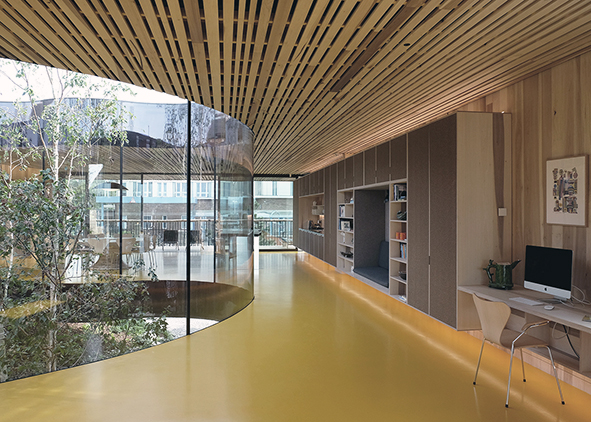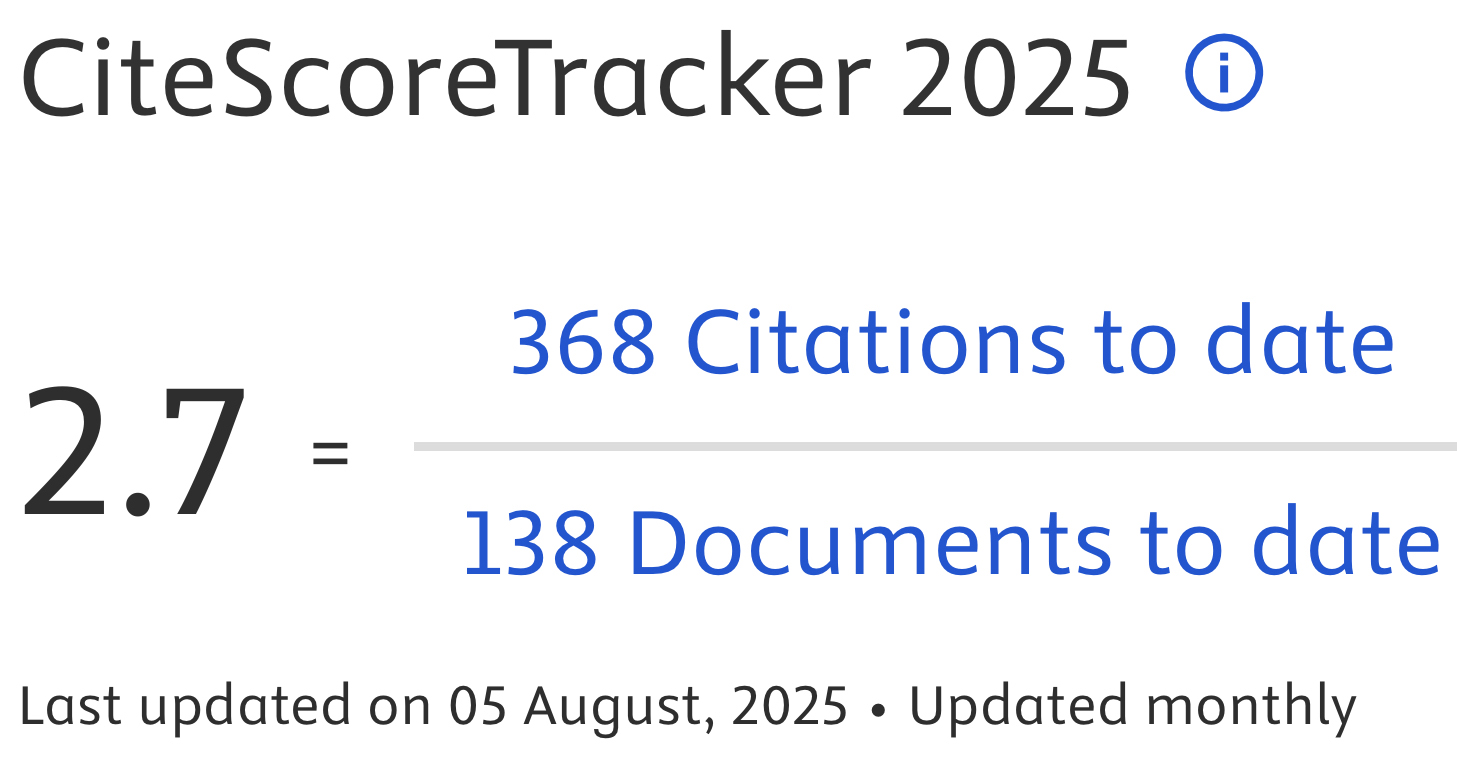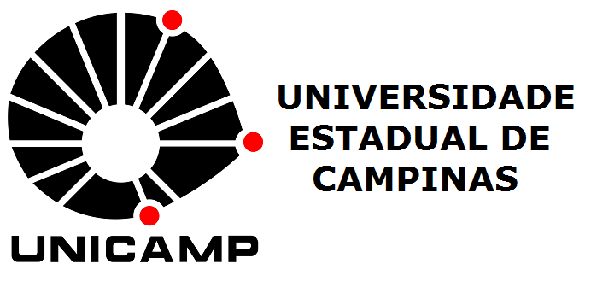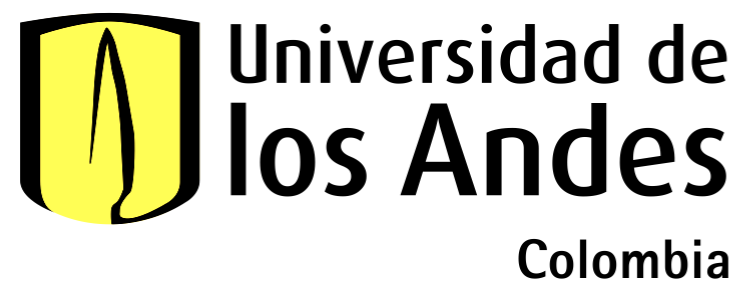Cohousing for women victims of violence – An Interreg project for gender equality
DOI:
https://doi.org/10.69143/2464-9309/17162025Keywords:
cohabitation, shared work, gender-based violence, women’s empowerment, Interreg programmeAbstract
The paper describes an Interreg project on cohousing and coworking for women victims of gender-based violence, outlining its context, motivations, objectives, phases, ongoing developments and reporting on the first results achieved. The project, called Femmes Libres, sees the transnational collaboration of public and private partners addressing the issue from different points of view. In the paper, however, showing the interdisciplinary approach of the partnership, the focus is mainly on the design aspects of the proposed housing model. It highlights architectural research in achieving SDG 5 and other synergistically related SDGs.
Article info
Received: 14/03/2025; Revised: 17/04/2025; Accepted: 20/04/2025
Downloads
Article Metrics Graph
References
Baker, C. K, Billhardt, K. A., Warren, J., Rollins, C. and Glass, N. E. (2010), “Domestic violence, housing instability, and homelessness – A review of housing policies and program practices for meeting the needs of survivors”, in Aggression and Violent Behavior, vol. 15, issue 6, pp. 430-439. [Online] Available at: doi.org/10.1016/j.avb.2010.07.005 [Accessed 25 March 2025].
Bianchetti, C. (2020), Corpi tra spazio e progetto, Mimesis, Milano.
Bianchi, F. and Costa, G. (2024), “Living together as a solidarity and generative practice – The case of co-housing and organized cohabitations”, in International Review of Sociology, vol. 34, issue 1, pp. 110-134. [Online] Available at: doi.org/10.1080/03906701.2024.2316509 [Accessed 25 March 2025].
Buondonno, L. and Giachetta, A. (eds) (2025), Cohousing e coworking per donne vittime di violenza e soggetti fragili – Ripensare gli spazi abitativi e di lavoro nella ricostruzione del sé | Cohabitat et coworking pour les femmes victimes de violence et les personnes fragilisées – Repenser les espaces de vie et de travail dans la reconstruction de soi, Genova University Press, Genova. [Online] Available at: gup.unige.it/Cohousing-e-coworking-per-donne-vittime-di-violenza-e-soggetti-fragili [Accessed 25 March 2025].
Busi, B. and Menniti, A. (2021), “Il perno del sistema antiviolenza – Centri antiviolenza e case rifugio”, in Demurtas, P. and Misiti, M. (eds), Violenza contro le donne in Italia – Ricerche, orientamenti e buone pratiche, Edizioni Angelo Guerini e Associati, Milano, pp. 121-138.
Canepa, E. (2022), Architecture is Atmosphere – Notes on Empathy, Emotions, Body, Brain, and Space, Mimesis International, Milano-Udine.
Casodi, M., Chipi, B., Serra, R. and Vitale, F. (2021), “Abitazioni condivise tra utenti psichiatrici e coinquilini con bisogno abitativo – Autonomia, integrazione e inclusione nel Progetto P.RI.S.M.A.”, in Evidence-based Psychiatric Care, vol. 7, issue supp. 1, pp. 37-40. [Online] Available at: fondazionecittadelsole.it/wp-content/uploads/2022/03/Pubblicazione-Dymphnas-x-PRISMA.pdf [Accessed 25 March 2025].
Coccia, E. (2021), Filosofia della casa – Lo spazio domestico e la felicità, Einaudi, Torino.
Col-lectiu Punt 6 (2019), Urbanismo feminista – Por una transformación radical de los espacios de vida, Virus Editorial, Barcelona.
Costa, G. (2022), “Organized Cohabitation and Domestic Hyper-proximity in Social Policies”, in Italian Sociological Review, vol. 12, issue 3, pp. 1161-1183. [Online] Available at: dx.doi.org/10.13136/isr.v12i3.607 [Accessed 25 March 2025].
Costa, G. and Magino, S. (2021), “Giovani LGBT senza dimora trovano casa”, in Autonomie locali e servizi sociali, fascicolo 2, pp. 317-332. [Online] Available at: doi.org/10.1447/101456 [Accessed 25 March 2025].
Council of Europe (2011), Council of Europe Convention on preventing and combating violence against women and domestic violence – Instanbul, 11.V.2011. [Online] Available at: rm.coe.int/168008482e [Accessed 25 March 2025].
Demurtas, P. (2022), “Il riconoscimento delle pratiche di lavoro dell’associazionismo femminile e femminista nel sistema dell’antiviolenza italiano”, in Welfare e Ergonomia, vol. 8, fascicolo 2, pp. 77-91. [Online] Available at: doi.org/10.3280/WE2022-002-S1007 [Accessed 25 March 2025].
Demurtas, P. and Cubeddu, F. (2025), “Protezione e autonomia nel panorama sociale e culturale delle soluzioni abitative per le donne sopravvissute alla violenza | Protection et autonomie dans le paysage social et culturel des solutions de logement pour les femmes survivantes de violences”, in Buondonno, L. and Giachetta, A. (eds), Cohousing e coworking per donne vittime di violenza e soggetti fragili – Ripensare gli spazi abitativi e di lavoro nella ricostruzione del sé | Cohabitat et coworking pour les femmes victimes de violence et les personnes fragilisées – Repenser les espaces de vie et de travail dans la reconstruction de soi, Genova University Press, Genova, pp. 23-38. [Online] Available at: gup.unige.it/sites/gup.unige.it/files/2025-03/Cohousing_e_coworking_per_donne_vittime_di_violenza.pdf [Accessed 25 March 2025].
Demurtas, P. and Tintori, A. (2013), “Quale famiglia?”, in Avveduto, S. (ed.), Saperi in rete – Scenari e prospettive su popolazione, welfare, scienza e società, IRPPS, Roma, pp. 89-98. [Online] Available at: researchgate.net/publication/266644710_Quale_famiglia_-_Demurtas_Tintori [Accessed 25 March 2025].
Devlin, P., Douglas, R. and Reynolds, T. (2015), “Collaborative design of Older Women’s CoHousing”, in Working with Older People, vol. 19, issue 14, pp. 188-194. [Online] Available at: doi.org/10.1108/WWOP-08-2015-0018 [Accessed 25 March 2025].
Donnelly, S. (2020), Design guide for refuge accommodation for women and children. [Online] Available at: apo.org.au/node/313257 [Accessed 25 March 2025].
Dowling, R. and Mee, K. (2007), “Home and Homemaking in Contemporary Australia”, in Housing, Theory and Society, vol. 24, issue 3, pp. 161-165. [Online] Available at: doi.org/10.1080/14036090701434276 [Accessed 25 March 2025].
European Institute for Gender Equality (2014), Estimating the cost of gender-based violence in the European Union – Report. [Online] Available at: eige.europa.eu/publications-resources/publications/estimating-costs-gender-based-violence-european-union-report [Accessed 25 March 2025].
Federici, S. (2020), Il punto zero della rivoluzione – Lavoro domestico, riproduzione e lotta femminista, Ombrecorte, Verona.
Filighera, T. and Micalizzi, A. (2018), Psicologia dell’abitare – Marketing, architettura e neuroscienze per lo sviluppo di nuovi modelli abitativi, FrancoAngeli, Milano.
Follesa, S., Corti, M., Struzziero, D. and Piluso, A. (2024), “Design del sistema alimentare per comunità resilienti – Agricoltura urbana e spazi sostenibili | Food system design for resilient communities – Urban agriculture and sustainable spaces”, in Agathón | International Journal of Architecture, Art and Design, vol. 15, pp. 306-315. [Online] Available at: doi.org/10.19229/2464-9309/15252024 [Accessed 25 March 2025].
Francini, M., Chimirri, R., Palermo, A. and Viapiana, M. F. (2018), “Cohousing e nuove culture dell’abitare nell’urbanistica post-sismica | Cohousing and new dwelling cultures in post-seismic urban planning”, in Agathón | International Journal of Architecture, Art and Design, vol. 4, pp. 153-158. [Online] Available at: doi.org/10.19229/2464-9309/4192018 [Accessed 25 March 2025].
Ginelli, E. (2015), “Abitare collettivo come nucleo di cittadinanza – Nuove relazioni e nuovo agire professionale”, in Falotico, A., Flora, N., Moccia, F. D., Palestino, M. F., Pone, S., Rispoli, F., Russo, M., Russo Ermolli, S. and Scala, P. (eds), Abitare Insieme – Il progetto contemporaneo dello spazio condiviso | Living Together – The contemporary project of the shared space, Clean, Napoli, pp. 1212-1222.
Grabowska, S., Holtzinger, C., Wilson, J., Rossbet, L., Macur, R. and Brisson, D. (2021), Architectural Principles in the Service of Trauma Informed Design. [Online] Available at: shopworksarc.com/wp-content/uploads/2021/10/Arc-Principles-in-the-Service-of-TID.pdf [Accessed 25 March 2025].
Heynen, H. and Baydar, G. (eds) (2005), Negotiating Domesticity – Spatial productions of gender in modern architecture, Routledge, London.
Housing Plus and Custance Architects (2022), Design Guide – Best practice design standards and features to create exceptional accommodation for those affected by Domestic and Family Violence. [Online] Available at: housingplus.com.au/news/design-guide-specialist-domestic-violence-accommodation/ [Accessed 25 March 2025].
Jeremy, K., Desrues, A., Decloitre-Amiard, C., Landrin, M., Cohen Boulakia, R., Thery, D., Gentile, G., Auquier, P. and Jego, M. (2024), “Strategies for seeking care in the host country among asylum-seeking women who have been victims of sexual violence – A French qualitative study”, in Journal of Migration and Health, vol. 10, article 100254, pp. 1-7. [Online] Available at: doi.org/10.1016/j.jmh.2024.100254 [Accessed 25 March 2025].
Kern, L. (2021), La città femminista – La lotta per lo spazio in un mondo disegnato da uomini, Treccani, Roma.
Langella, C. Russo, D. and Scalisi, F. (2024), “Design e Gastrofisica – Innovazione e sostenibilità dei sistemi alimentari multisensoriali | Design and Gastrophysics – Innovation and sustainability of multisensory food systems”, in Agathón | International Journal of Architecture, Art and Design, vol. 16, pp. 250-277. [Online] Available at: doi.org/10.19229/2464-9309/16222024 [Accessed 25 March 2025].
Maggie’s Keswick Jencks Cancer Caring Trust (n.d.), Maggie’s Architecture and Landscape Brief. [Online] Available at: maggies.org/media/filer_public/e0/3e/e03e8b60-ecc7-4ec7-95a1-18d9f9c4e7c9/maggies_architecturalbrief_2015.pdf [Accessed 25 March 2025].
Mallgrave, H. F. (2015), L’empatia degli spazi – Architettura e neuroscienze, Raffaello Cortina Editore, Milano.
Molteni, L., Mauri, A. M. and Demurtas, P. (2023), Relazione finale di valutazione del Piano Strategico Nazionale sulla violenza maschile contro le donne 2017-2020. [Online] Available at: viva.cnr.it/wp-content/uploads/2024/04/relazione-finale-valutazione-psn-2017-2020-con-annessi-dicembre-2023.pdf [Accessed 25 March 2025].
Minchella, S., De Leo, A., Orazi, D., Mitello, L., Terrenato, I. and Latina, R. (2021), “Violence against women – An observational study in an Italian emergency department”, in Applied Nursing Research, vol. 58, article 151411, pp. 1-7. [Online] Available at: doi.org/10.1016/j.apnr.2021.151411 [Accessed 25 March 2025].
Murvartian, L., Saavedra-Macías, F. J. and Infanti, J. J. (2023), “Public stigma toward women victims of intimate partner violence – A systematic review”, in Aggression and Violent Behavior, vol. 73, article 101877, pp. 1-16. [Online] Available at: doi.org/10.1016/j.avb.2023.101877 [Accessed 25 March 2025].
Owen, C. and Crane, J. (2022), “Trauma-Informed Design of Supported Housing – A Scoping Review through the Lens of Neuroscience”, in International Journal of Environmental Research and Public Health, vol. 19, issue 21, article 14279, pp. 1-27. [Online] Available at: doi.org/10.3390/ijerph192114279 [Accessed 25 March 2025].
Proia, F., Pietrobelli, M. and Demurtas, P. (2024), Mappatura degli strumenti regionali a sostegno del percorso di fuoriuscita dalla violenza con specifico riferimento all’ambito abitativo, economico e occupazionale. [Online] Available at: viva.cnr.it/wp-content/uploads/2024/03/mappatura-degli-strumenti-regionali-sostegno-del-percorso-fuoriuscita-dalla-violenza-con-specifico-riferimento-ambito-abitativo-economico-occupazionale-gennaio-2024.pdf [Accessed 25 March 2025].
Robinson, S. (2021), Architecture is a verb, Routledge, New York.
Sardinha, L., Maheu-Giroux, M., Stockl, H., Meyer, S. R. and García-Moreno, C. (2022), “Global, regional, and national prevalence estimates of physical or sexual, or both, intimate partner violence against women in 2018”, in The Lancet, vol. 399, issue 10327, pp. 803-813. [Online] Available at: doi.org/10.1016/S0140-6736(21)02664-7 [Accessed 25 March 2025].
Scannell, L. and Gifford, R. (2017), “The experienced psychological benefits of place attachment”, in Journal of Environmental Psychology, vol. 51, pp. 256-269. [Online] Available at: doi.org/10.1016/j.jenvp.2017.04.001 [Accessed 25 March 2025].
Sdao, P. and Pisanu, S. (eds) (2024), Report Annuale – 2023. [Online] Available at: direcontrolaviolenza.it/wp-content/uploads/2024/06/REPORT-Dati-D.i.Re-2024.pdf [Accessed 25 March 2025].
Showalter, K. (2016), “Women’s employment and domestic violence – A review of the literature”, in Aggression and Violent Behavior, vol. 31, pp. 37-47. [Online] Available at: doi.org/10.1016/j.avb.2016.06.017 [Accessed 25 March 2025].
Sigmon, S. T., Whitcomb, S. R. and Snyder, C. R. (2002), “Psychological Home”, in Fisher, A. T., Sonn, C. C. and Bishop, B. J. (eds), Psychological Sense of Community – Research Application and Implications, Springer, Boston (MA), pp. 25-41. [Online] Available at: doi.org/10.1007/978-1-4615-0719-2_2 [Accessed 25 March 2025].
The Equality Institute and UN Women (2023), Together for Prevention – Handbook on Multisectoral National Action Plans to Prevent Violence against Women and Girls, UN Women Office Publishing, New York. [Online] Available at: unwomen.org/en/digital-library/publications/2023/10/together-for-prevention-handbook-on-multisectoral-national-action-plans-to-prevent-violence-against-women-and-girls [Accessed 25 March 2025].
Ulrich, R. S., Simons, R. F., Losito, B. D., Fiorito, E., Miles, M. A. and Zelson, M. (1991), “Stress recovery during exposure to natural and urban environments”, in Journal of Environmental Psychology, vol. 11, issue 3, pp. 201-230. [Online] Available at: doi.org/10.1016/S0272-4944(05)80184-7 [Accessed 25 March 2025].
Walker-Descartes, I., Mineo, M., Vaca Condado, L. and Agrawal, N. (2021), “Domestic Violence and Its Effects on Women, Children, and Families”, in Pediatric Clinics of North America, vol. 68, issue 2, pp. 455-464. [Online] Available at: doi.org/10.1016/j.pcl.2020.12.011 [Accessed 25 March 2025].
Zumthor, P. (2006), Atmospheres – Architectural Environments, Surrounding Objects, Birkhäuser Verlag, Berlin.

Downloads
Published
How to Cite
Issue
Section
Categories
License
Copyright (c) 2025 Andrea Giachetta, Linda Buondonno, Maria Canepa

This work is licensed under a Creative Commons Attribution 4.0 International License.
This Journal is published under Creative Commons Attribution Licence 4.0 (CC-BY).
License scheme | Legal code
This License allows anyone to:
Share: copy and redistribute the material in any medium or format.
Adapt: remix, transform, and build upon the material for any purpose, even commercially.
Under the following terms
Attribution: Users must give appropriate credit, provide a link to the license, and indicate if changes were made; users may do so in any reasonable manner, but not in any way that suggests the licensor endorses them or their use.
No additional restrictions: Users may not apply legal terms or technological measures that legally restrict others from doing anything the license permits.
Notices
Users do not have to comply with the license for elements of the material in the public domain or where your use is permitted by an applicable exception or limitation.
No warranties are given. The license may not give users all of the permissions necessary for their intended use. For example, other rights such as publicity, privacy, or moral rights may limit how you use the material.


















































































